Best Time to Visit Edinburgh: Weather, Festivals & Costs
Please note that some of the links may be affiliate links, and at no additional cost to you, I earn a small commission if you make a purchase. I recommend only products & companies I love and use, and the income goes back into making this little blog successful!
So, when is the best time to visit Edinburgh, and most importantly, why?!
I visited in early June for about a week before heading to the rest of my UK tour, and while the rain dampened a few of my plans, it was still one of the prettier (and fun-forward) cities I’ve been to.
The capital city of Scotland is popular for a ton of reasons, weather not being one of them! 😀
The city is famous for its rich history and well-preserved historic sites, like The Royal Mile, Edinburgh Castle, and Holyrood Palace, to name a few. It is also popular for its festivals, with the Edinburgh Fringe Festival in August being the largest arts festival in the world.
I also love the Scottish cultural heritage you get to see in Edinburgh (beyond the pubs and the kilts), the friendly atmosphere, and, oddly enough, their obsession with ghosts and haunted things. Yea… it’s a thing!
So let’s deep dive into the best time to visit Edinburgh, the weather by season, the festivals by month, where to stay in the city, and what to do throughout the year!
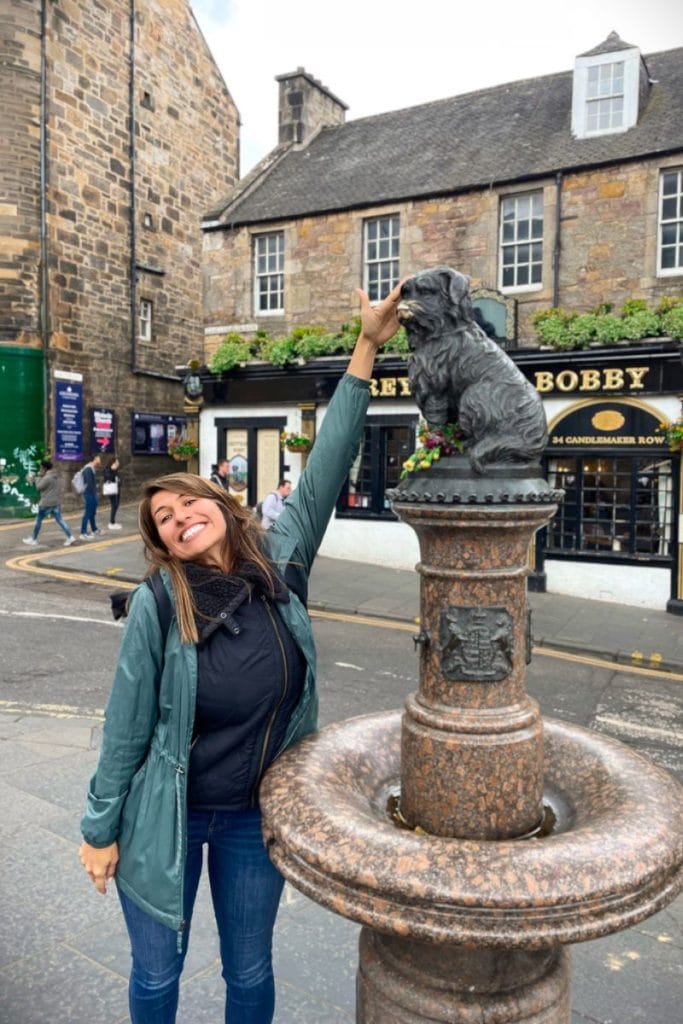
Overall Best Time To Visit Edinburgh
The best time to visit Edinburgh depends on what you want to do, but my recommendation is to go in the summer season when the weather is decent and the festivals make the city come alive.
If you prefer milder weather and fewer crowds, autumn is a great option too. That said, even winter has its moment with the Edinburgh Christmas Markets and New Year’s Eve parties.
What is the best month to vacation in Scotland?
I think July and August are the best times to visit Scotland due to the warmer weather.
Temperatures are normally in the 60s Fahrenheit, and the usual rains are holding back. The days are longer than you’d imagine, flowers are in bloom, and everyone is out and about in nature.
This is also the peak tourist season, and accommodation prices will be at their highest, so book and plan ahead.
What is the cheapest time to go to Scotland?
The cheapest month to visit Scotland in terms of accommodation and tourism expenses is typically during the winter months, specifically from November to February.
Winter experiences lower tourist numbers due to colder weather and shorter daylight hours. As a result, you may find more affordable prices for accommodations and flights.
However, while you might save on accommodation and certain expenses, you should be prepared for the colder weather and the rain. You will need a heavy winter jacket, gloves, and a shot of strong Scottish whiskey to keep the blood pumping every morning.
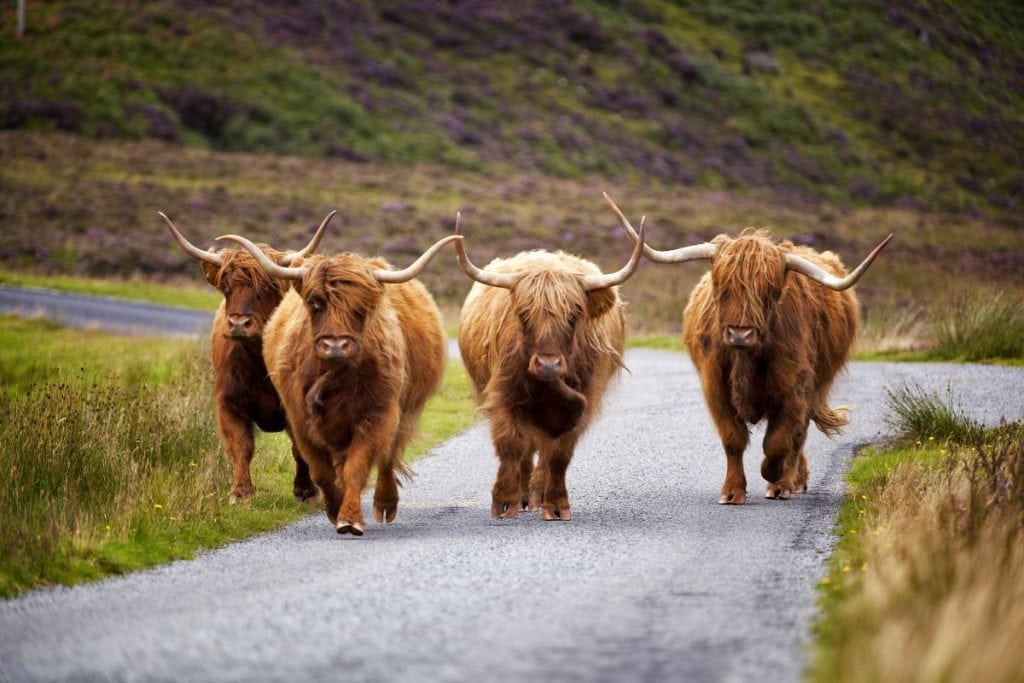
Best Time To Visit Edinburgh [By Season & Festival]
I recommend visiting Edinburgh in the summer or early fall, specifically in July and August. Here is a breakdown of what the weather looks like and things to do, season to season.
Edinburgh In The Summer (June to August)
⭐️ Best For: Edinburgh Fringe Festival (August), outdoor activities, and generally the best time to visit.
Summer is the peak tourist season in Edinburgh, and it’s also when the city comes alive with various festivals. During this time, the city is filled with performances, shows, exhibitions, and street entertainment.
Festivals in July and August :
- Edinburgh Jazz & Blues Festival (July)
- Edinburgh Art Festival (July-August)
- Edinburgh International Festival (August)
- Edinburgh International Books Festival (August)
- Edinburgh International Film Festival (August)
- ⭐️Edinburgh Fringe Festival ⭐️(August)
- Edinburgh Military Tattoo (August)
The summer months in Edinburgh typically bring milder temperatures and longer daylight hours. While the weather can still be unpredictable in terms of rain and clouds, it’s generally more pleasant.
Summer is also the busiest time for tourism in Edinburgh, which means that popular attractions, restaurants, and accommodations can be quite crowded. It’s advisable to book lodging well in advance and be prepared for lines at popular spots.
With the improved weather, summer is a great time to explore Edinburgh’s outdoor attractions. You can hike up Arthur’s Seat or Calton Hill for panoramic views of the city (which I loved!), or take leisurely walks along the Water of Leith Walkway or Princes Street Gardens.

Lastly, the city’s parks and gardens are in full bloom during the summer, making it a perfect time for picnics or simply relaxing amidst greenery. The Royal Botanic Garden and Princes Street Gardens are especially beautiful this time of year.
👉 Did You Know: With the sun setting later in the evening, you have more time to explore and enjoy the city.
In summary, Edinburgh in the summer is amazing. Just be prepared for crowds and definitely book accommodations and tickets to things in advance.
Edinburgh In The Fall (September to November)
⭐️ Best For: International Storytelling Festival (October), Pretty Changing of the Leaves
Edinburgh in the fall, offers a different but equally charming experience compared to summer.
One of the highlights of visiting Edinburgh in the fall is the beautiful transformation of the city’s foliage. The trees in parks, gardens, and along the streets turn shades of red, orange, and gold, creating a picturesque and colorful backdrop for your visit.
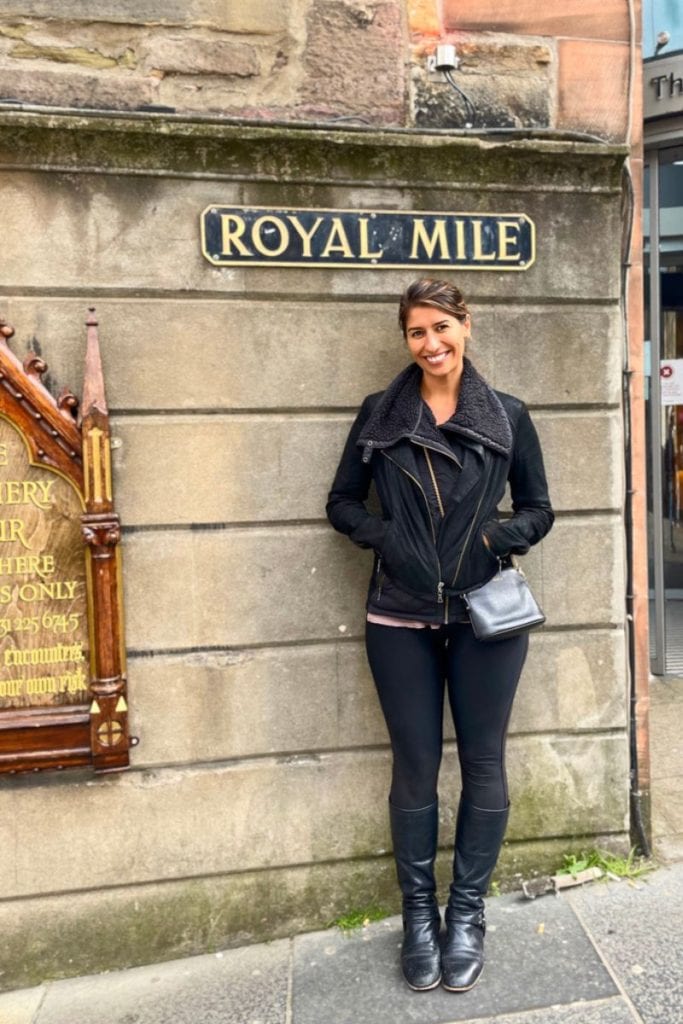
The weather in the fall is generally mild and cooler compared to the summer months. It’s a comfortable time to explore the city without facing the extreme cold of winter.
As the peak tourist season tapers off after the summer festivals, you’ll encounter fewer crowds, which means you can enjoy popular attractions and historic landmarks with more space and less wait time.
While not as heavily festival-focused as the summer, Edinburgh still hosts various events and festivals during the fall months, most notably the International Storytelling Festival (October).
Edinburgh’s food scene often incorporates seasonal ingredients, and in the fall, you might find dishes featuring locally sourced produce. It’s a good time to try heartier, warming meals and traditional Scottish cuisine.
The stunning foliage, comfortable weather, and fewer crowds make it a great time to explore the city’s attractions and enjoy its cozy ambiance. Just be prepared for shorter days and potentially rainier weather.
Edinburgh In The Winter (December to February)
⭐️ Best For: Christmas Markets, Hogmanay New Years Celebration (December), Burns Night (January)
Edinburgh in the winter is a festive experience, despite the colder temperatures. And when I say cold, I mean pack a winter jacket!
Edinburgh gets decked out in beautiful holiday decorations, especially in the city center. The streets and shops are adorned with festive lights, Christmas trees, and decorations, really ringing in the holiday spirit.
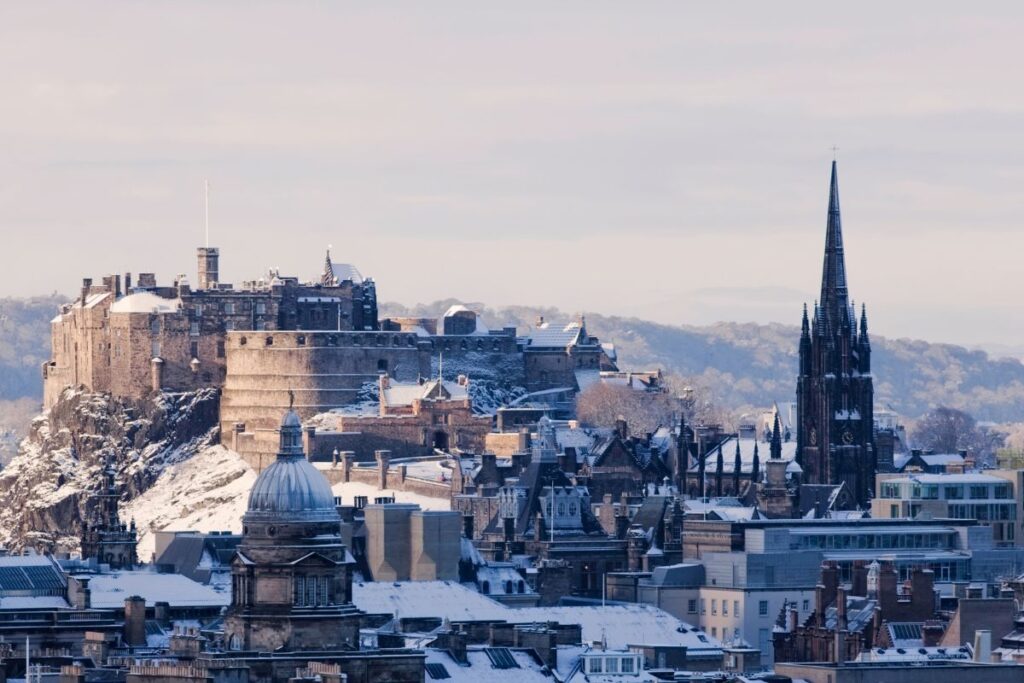
The city hosts several Christmas markets, the most prominent being the Edinburgh Christmas Market in Princes Street Gardens – think handcrafted gifts and mulled wine, caroling and little holiday gifts waiting to be purchased.
Despite the colder weather, the city takes on a cozy and warm ambiance. Cafes, pubs, and restaurants often have fireplaces and offer hearty comfort foods to help you stay warm and comfortable.
Winter is a great time to explore indoor attractions, such as museums, art galleries, and historical sites. Edinburgh Castle and the many museums provide educational experiences without having to brave the cold.
Hogmanay is the Scottish New Year’s Eve celebration, and Edinburgh is renowned for its spectacular Hogmanay festivities. The city hosts a series of events, including a massive street party, fireworks display, and live music performances, making it a great way to ring in the new year.
👉 Keep In Mind: Dress warmly with layers, a good coat, and waterproof gear to stay comfortable while exploring.
In summary, Edinburgh in the winter offers a festive and cozy atmosphere with holiday decorations, events, and a unique charm. While the weather is colder and the days are shorter, the city’s winter offerings make it a special destination for those who enjoy holiday festivities and a cozy ambiance.
Edinburgh In The Spring (March to May)
⭐️ Best For: Edinburgh International Children’s Festival (May) and relaxed sightseeing.
Edinburgh in the spring is an OK time to visit. You’ll still need a winter jacket in my opinion, as the weather will be in the 30s and 40s Fahrenheit.
One of the highlights of spring in Edinburgh is the burst of color as flowers start to bloom in the city’s parks and gardens. The Royal Botanic Garden, Princes Street Gardens, and other green spaces come to life with vibrant blossoms, making it a perfect time for leisurely walks.
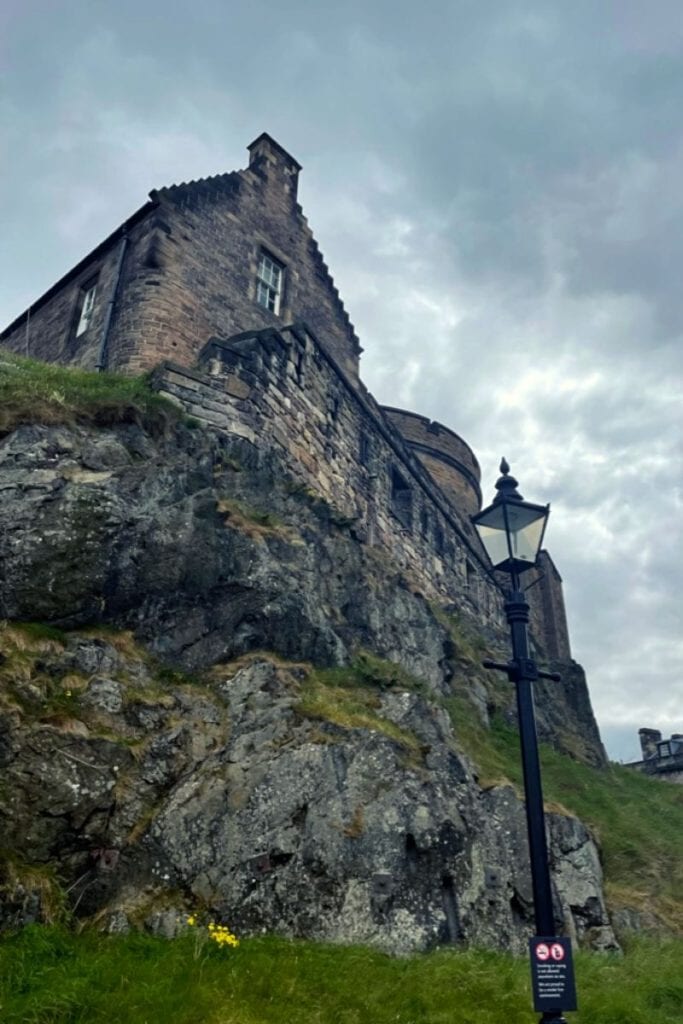
Spring is considered a shoulder season, meaning there are fewer tourists compared to the busy summer months. This provides a more relaxed atmosphere for sightseeing and exploring popular landmarks.
If your visit coincides with the Easter holiday, you can expect various Easter-themed events, egg hunts, and special menus at cafes and restaurants.
In summary, Edinburgh in the spring is a time of blooming gardens, longer days than winter, milder weather (but still cold), and a quieter atmosphere compared to the busy summer season.
What Is The Worst Time to Visit Edinburgh?
The worst time to visit Edinburgh largely depends on your preferences and what you want to experience during your trip. Here are my thoughts on the two worst times to visit Edinburgh.
❌ Winter (December to February)
Edinburgh can experience cold, damp, and often rainy weather during the winter months.
Additionally, the days are quite short, with limited daylight hours. While the city can still be charming with its festive decorations during the Christmas season, the weather might not be ideal for outdoor activities.
❌ August
Surprisingly, while August is a great time to visit due to the Edinburgh Festival Fringe, it can also be the worst.
Its popularity also means that the city will become extremely crowded and accommodations will be more expensive. If you’re not a fan of large crowds and higher prices, you might want to avoid this time.
Is Edinburgh good in October?
It’s not my cup of tea because the weather has turned for the rainy and cold variety, but there are both advantages and “think again” moments you should be aware of before planning your trip to Edinburgh in October:
Advantages of Visiting Edinburgh in October
✅ Fall Foliage
October is a time to see the changing colors of the foliage in and around Edinburgh. The city’s parks and gardens take on a picturesque look as the leaves turn various shades of red, orange, and yellow.
✅ Fewer Crowds
While October is still a popular month for tourists, it tends to be less crowded than the peak summer months. This can mean shorter lines and a more relaxed atmosphere.
✅ Fun Festivals
Edinburgh often hosts various events and festivals. Here is one of my favorites in October: International Storytelling Festival.
“Think Twice” Before Visiting Edinburgh in October
❌ Weather Sucks
While the weather might be milder compared to winter, it can still be quite changeable. Expect rain and pack layers – temperatures are in the 40s Fahrenheit.
❌ Shorter Days
As you move into autumn, the days start getting shorter, with fewer daylight hours for sightseeing and exploring.
❌ Operating Hours
Some attractions and tours might have reduced operating hours or even closures as they transition from the peak tourist season to the off-peak period.
In summary, visiting Edinburgh in October can be a great option if you enjoy autumnal prettiness, staying on a budget, and having fewer crowds. Just be prepared for cold, rainy weather and shorter daylight hours.
Best Places To Stay In Edinburgh
The best area to stay in Edinburgh can depend on your preferences, budget, and the purpose of your visit. Here are some popular neighborhoods to consider:
➡️ Old Town: The historic heart of Edinburgh, known for its cobblestone streets, medieval architecture, and iconic landmarks like the Edinburgh Castle and the Royal Mile. Staying in the Old Town provides easy access to many of the city’s top attractions.
➡️ New Town: Despite its name, New Town was built in the 18th century and is characterized by its Georgian architecture, wide streets, and elegant squares. It’s a more upscale area with a range of boutique shops, galleries, and restaurants. Princes Street is a major shopping and dining street in this area.
➡️ Stockbridge: A charming and trendy neighborhood known for its independent boutiques and artisanal food shops. It offers a more relaxed atmosphere while still being within walking distance of the city center.
➡️ Leith: This once-industrial area has transformed into a vibrant hub with a creative arts scene, trendy bars, and a variety of eateries. The Royal Yacht Britannia and the Shore area are notable attractions in Leith.
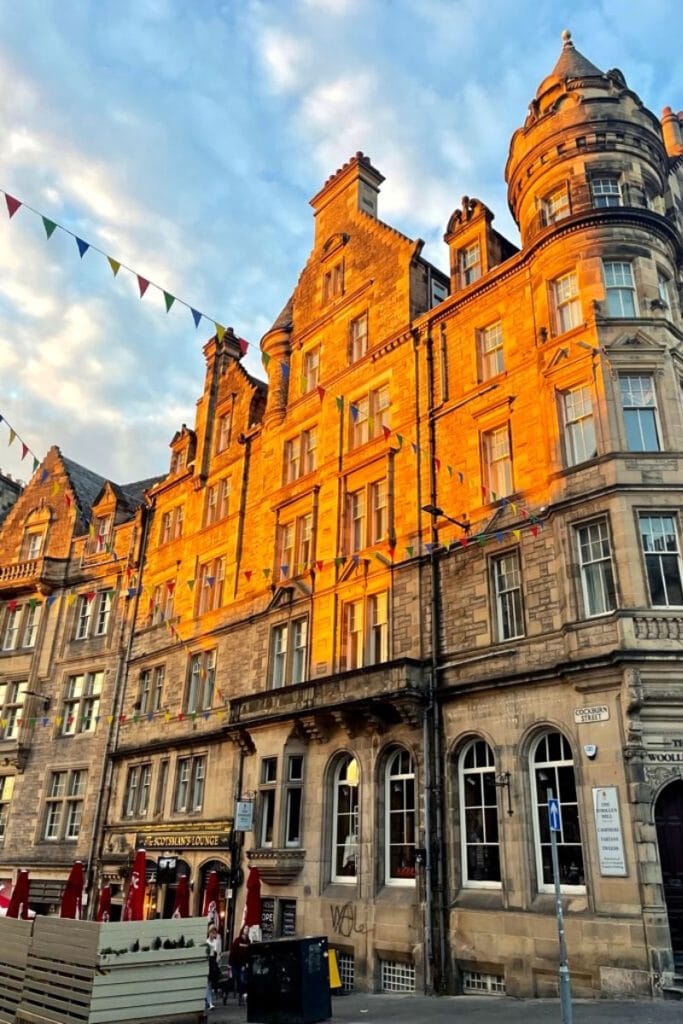
Keep in mind that Edinburgh is a fairly compact city, so many areas are easily accessible on foot or by using public transportation.
How many days do you need in Edinburgh?
When I went in early June, I spent about a week and was really able to see all the sites of Edinburgh, get a bit tipsy in the pubs with the locals for a few nights, and even sneak in a day trip to the Highlands to see the famous Scottish coos.
Here’s a rough guideline for you to gauge how you want to plan your trip:
✅ 2 – 3 Days: If you’re short on time, you can cover the main highlights in a couple of days. This would include visiting the Edinburgh Castle, exploring the Royal Mile, walking up Arthur’s Seat for panoramic views of the city, and visiting some of the major museums like the National Museum of Scotland.
✅ 4 – 5 Days: With a bit more time, you can delve deeper into the city’s attractions. In addition to the above, you can explore the Palace of Holyroodhouse, take a stroll through the Dean Village, visit the Scottish National Gallery, and take a ghost tour or a literary tour to learn about Edinburgh’s rich history and literary connections.
✅ 6+ Days: If you want to truly immerse yourself and perhaps take day trips from Edinburgh, you can spend more time exploring the city’s neighborhoods like Stockbridge and Leith. You can also consider day trips to the Rosslyn Chapel, Stirling Castle, or even a trip to the Highlands.
Conclusion: Best Time To Visit Edinburgh is Summer!
Overall, the combination of history, festivals, natural beauty, and warm hospitality makes Edinburgh a popular city to visit, especially so if you choose your timing carefully.
My favorite time to visit would be in August because, despite the crowds and higher costs, I love the sun and the festival ambiance!
